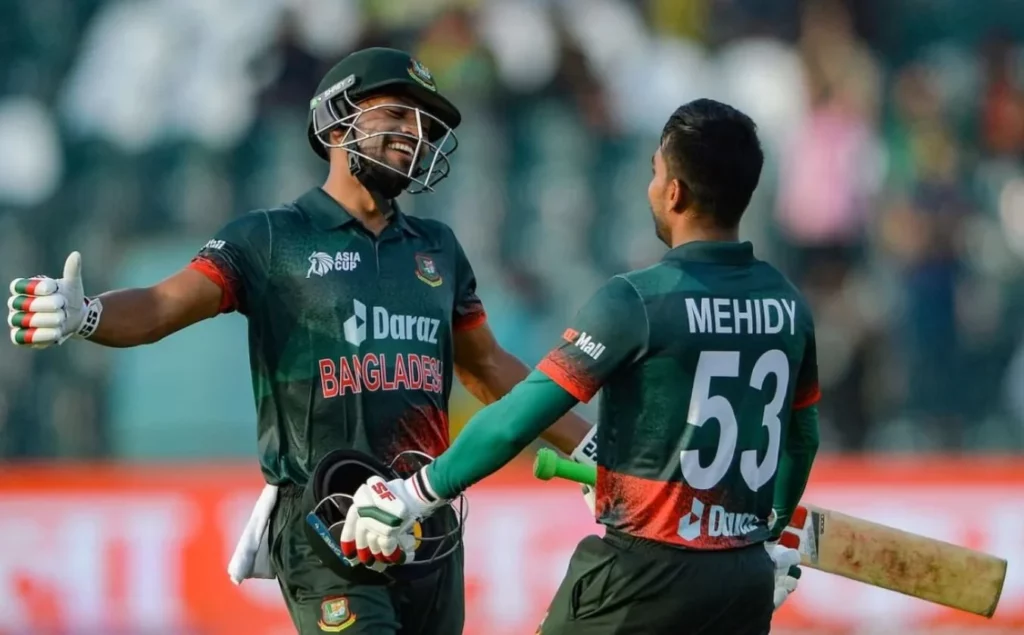
In the heart of Colombo, cricket fans eagerly awaited what promised to be a showdown for the ages in the Asia Cup. This was no ordinary game; it was a contest of skill, strategy, and determination between two giants of the cricketing world. India, celebrated for its rich cricketing heritage and formidable record, entered the arena as anticipated champions. Yet, Bangladesh’s performance that day was nothing short of revelatory, presenting a compelling mix of passion, finesse, and audacious gameplay.
To the discerning eye, Bangladesh’s strategy was a masterstroke in cricketing acumen. Their razor-sharp fielding, intricate batting tactics, and quicksilver reactions spoke of a Bangladeshi cricket revolution. India, globally renowned for its versatile lineup and depth, seemed momentarily destabilized by the unanticipated dynamism of Bangladesh’s play. This match transcended a mere quest for victory; it was Bangladesh signaling its ascent to cricket’s elite echelons.
The Colombo Pitch and Player Highlights
The Colombo wicket was a spinner’s paradise. But it was Shakib Al Hasan’s batting brilliance and the electrifying bowling of debutant Tanzim Hasan Sakib that really shaped the game’s narrative. India, despite its imposing presence, appeared ruffled. Strategic squad rotations introduced new players. Standouts included Mohammed Shami’s standout performance and Shubman Gill’s much-needed century. Yet, without the skills of Kuldeep Yadav, they seemed exposed to the left-handers of Bangladesh.
Bangladesh’s Batting Exhibition
The pairing of Shakib Al Hasan and Nasum Ahmed engineered a comeback that was nothing short of genius. Following a precarious 59/4 start, their aggressive stance against India’s left-arm spinners left a mark:
| Bowler Classification | Runs | Deliveries |
| India’s Left-Arm Spinners | 70 | 60 |
| Bangladesh’s Offspinners | 57 | 57 |
India’s grip on the game seemed to slacken due to fielding lapses, granting lifelines to Shakib and Towhid Hridoy. Without these oversights, the innings could’ve taken a different direction.
“Cricket is a game of glorious uncertainties.” – Richie Benaud
Shakib’s gameplay was nothing short of a cricketing tutorial, adjusting his pace and launching three majestic sixes.

On India’s Bowling
India’s spinners may reflect on missed opportunities, especially when conditions were so favorable. Hridoy’s selective targeting of Tilak Varma was evident, but wickets from Thakur and Jadeja kept the contest alive.
Shubman Gill, undeterred by the pitch, was in sublime form. His agility against spin and ability to seize scoring opportunities was a lesson in batting. However, his formidable inning illuminated the pitch’s challenging disposition.
Gill’s lack of a solid partner became evident when Jadeja, after a promising start, was dismissed by Mustafizur Rahman. A promising partnership with Axar Patel was cut short by Mahedi Hasan’s brilliance.
During the crucial final overs, an injured Axar Patel’s boundaries showed a glimmer of hope for India. But Mustafizur Rahman had a different script in mind.
“Cricket is a pressure game, and when it comes to an India-Pakistan match the pressure is doubled.” – Imran Khan
Although this wasn’t an Indo-Pak face-off, the tension was palpable. Needing 12 in the last over, India’s fate hinged on their tail-enders. Yet, Tanzim’s prowess clinched the day for Bangladesh, reminding us of cricket’s innate unpredictability.
Batting Dynamics
Gill’s solo symphony underscored a key concern for India: the need for a more consistent middle-order contribution. While it’s true that Gill’s classical strokes and artful maneuvering against spin were exemplary, cricket, especially in the shorter formats, is a team endeavor. The absence of a solid partnership, particularly during the middle overs, increased the pressure on Gill. His dismissal was a turning point, with the momentum clearly shifting towards Bangladesh.
The famed Indian bowling lineup, celebrated for its ability to choke runs and pick up wickets, seemed somewhat out of rhythm. Perhaps it was the pressure of defending a modest total or the sheer brilliance of Bangladesh’s batsmanship. The absence of Kuldeep Yadav was felt keenly, especially when the pitch was turning square. Young Varma, despite his raw talent, appeared to grapple with the pressure, conceding pivotal runs.
In modern cricket, matches are often won and lost in the field. The Indian side, typically sharp and agile on the field, had an off-day. Missed catches and a few misfields perhaps cost them the match. These are areas the team would want to introspect on, given their usually high fielding standards.
Bangladesh’s Rise
For Bangladesh, this wasn’t just another win. It was a testament to their years of hard work, determination, and an unwavering belief in their abilities. The once ‘minnows’ of cricket have been silently and steadily improving their game on the international stage.
One of the hallmarks of a great cricketing nation is the ability to produce all-rounders, and in Shakib Al Hasan, Bangladesh has one of the best. But the emergence of young talents like Tanzim Hasan Sakib indicates that the future is even brighter. With a good mix of experience and youth, Bangladesh looks set to challenge the best in the world.






